Where the outback meets the sea

We have all seen and marvelled at the images of whale sharks, dappled and beautiful in the turquoise waters of Ningaloo Reef. But there is so much more to be seen here. Ningaloo Reef and associated Cape Range National Park are part of the 604,500ha Ningaloo Coast World Heritage Area and the combination is breathtaking.
A wonderful way to experience the best of these two spectacular landscapes is on the Island birds and whale sharks (or humpback whales depending on the time of year) and Ningaloo Reef wildlife and conservation tour with Australian Geographic, in collaboration with two members of Australian Wildlife Journeys – Exmouth Dive & Whalesharks Ningaloo and Echidna Walkabout Nature Tours. It will be more than just a tour, with guests being involved in meaningful conservation work. Not only will you get to experience these pristine environments; you will be playing a part in conserving them, and the wildlife within them, for future generations.
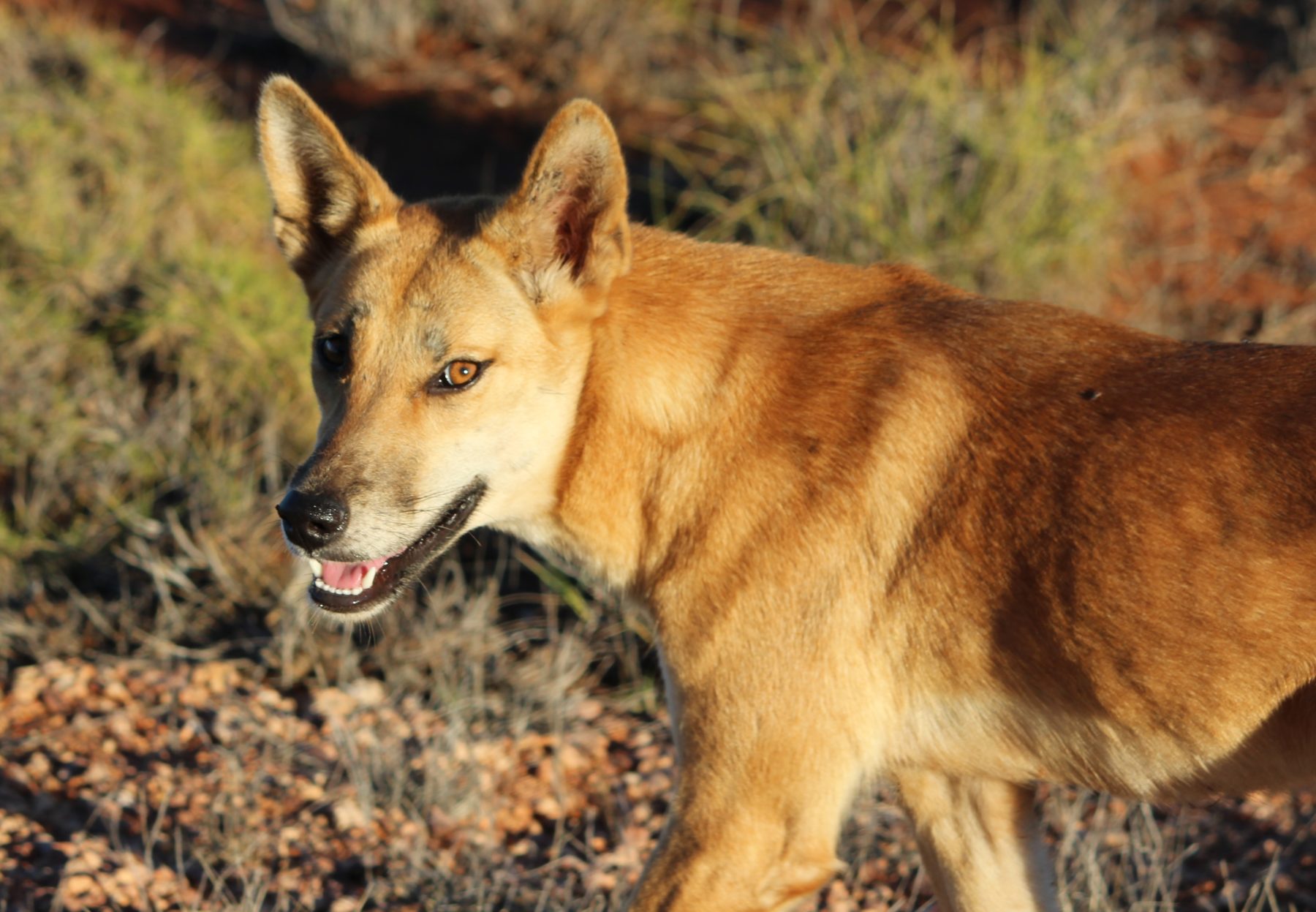
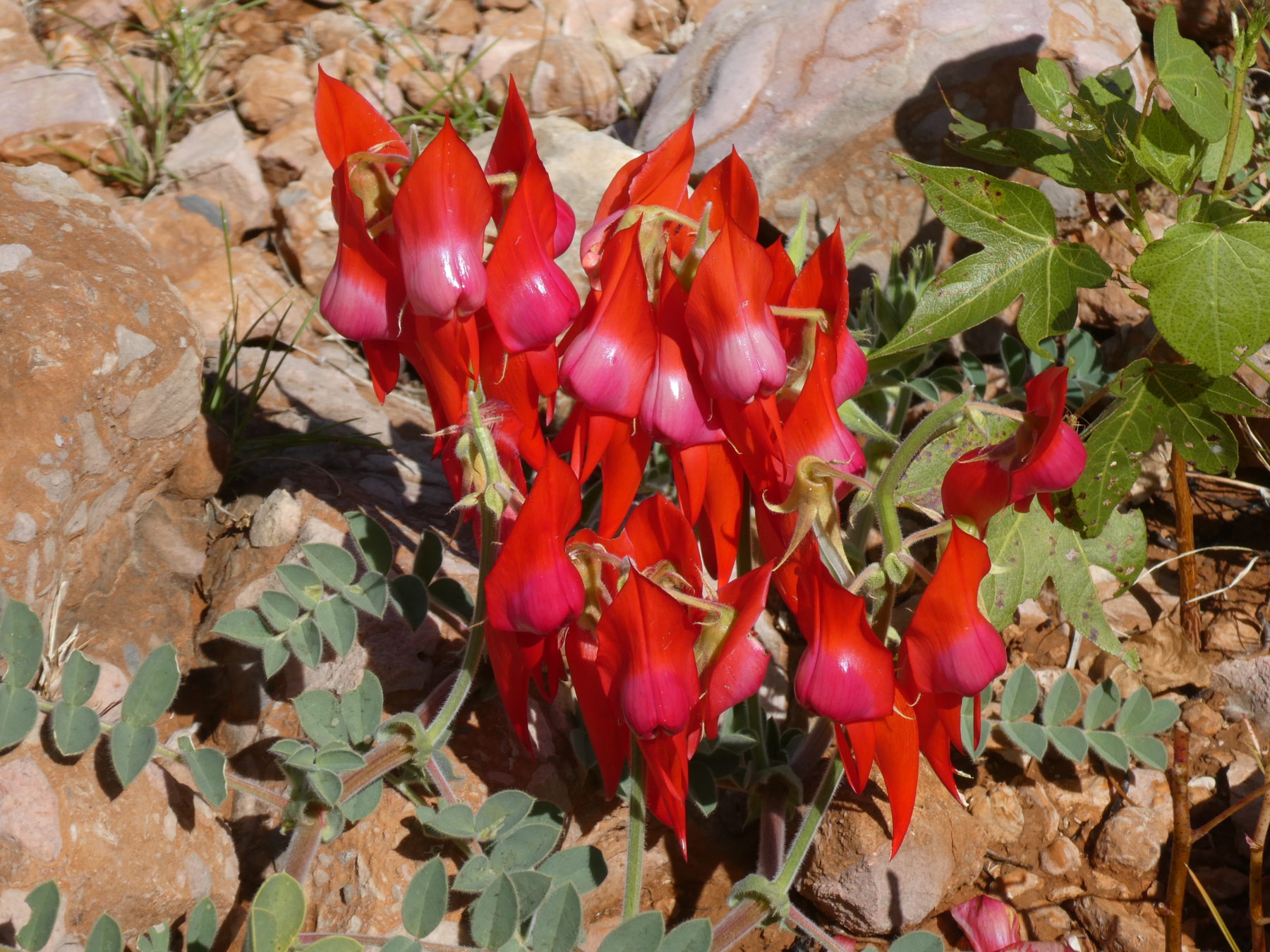
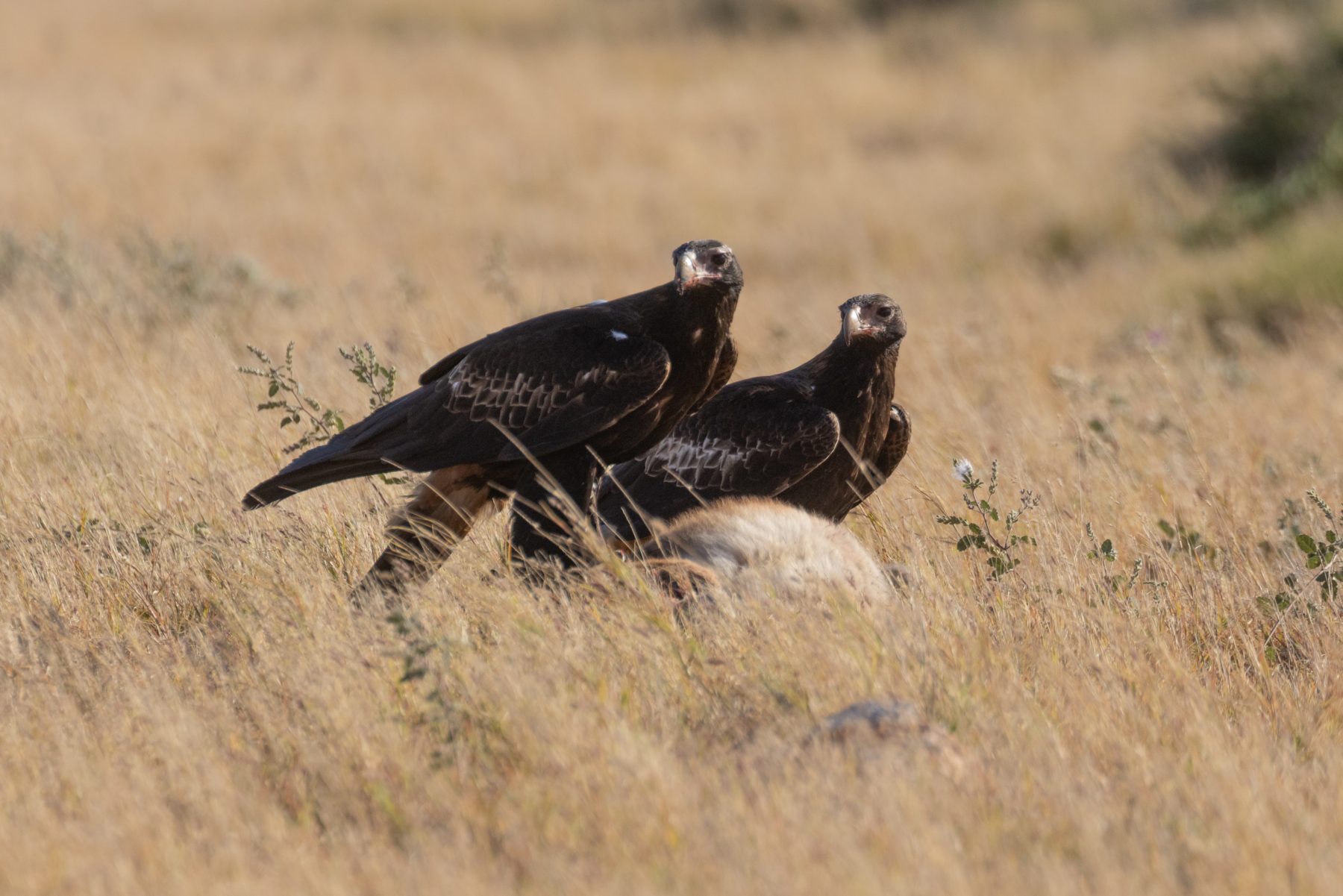
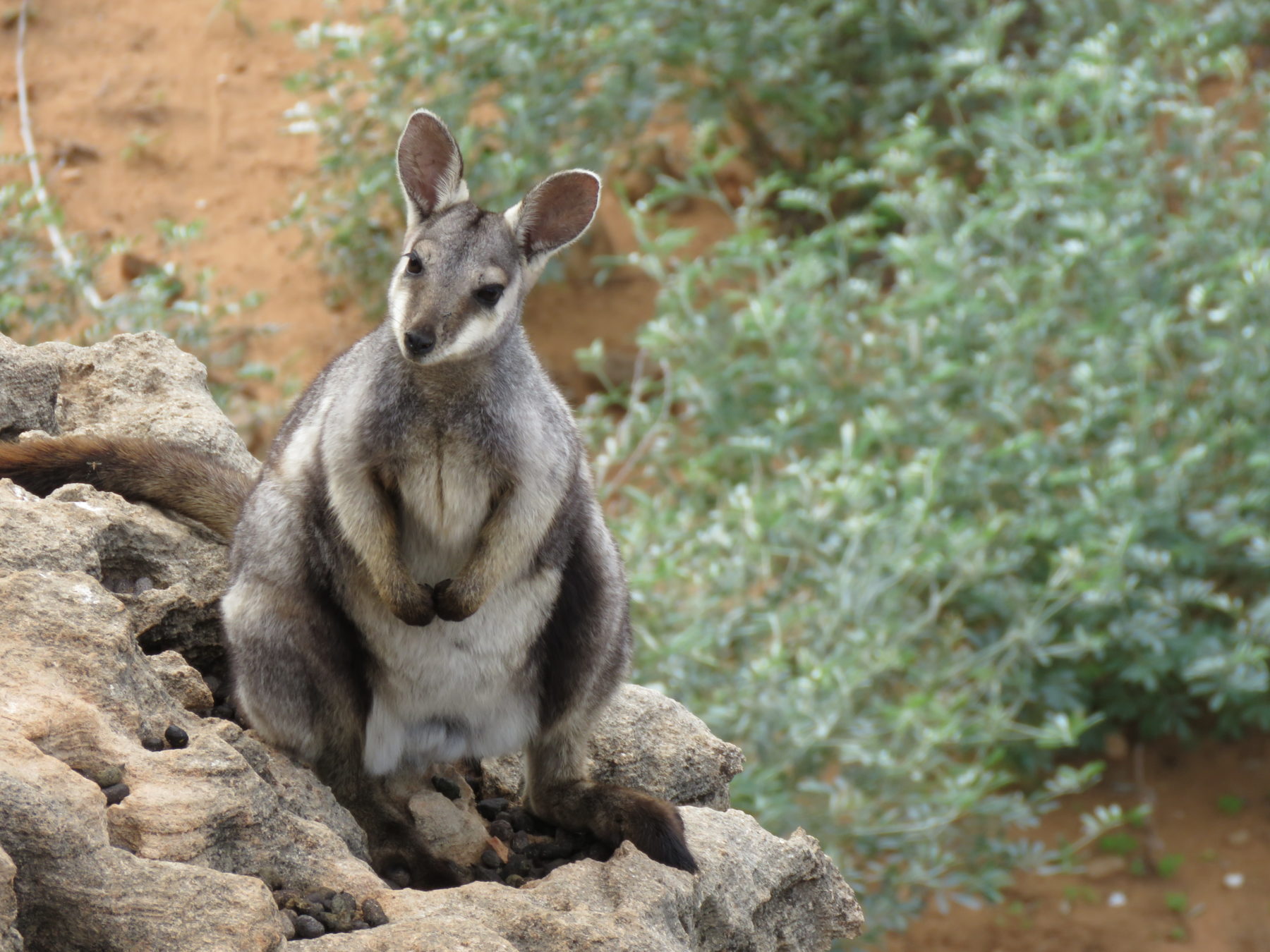
Cape Range National Park
Roger Smith, of Echidna Walkabout Nature Tours, is passionate about Cape Range and how the two very different places came to be wedded as one World Heritage area.
“I love the fact that the Cape Range National Park was incorporated into the Ningaloo Coast World Heritage Area. It’s been included because it IS Ningaloo. It was Ningaloo’s birthplace. From the lower levels of the range, you can look up and see the ancient coral terraces that were once the Ningaloo Reef before sea levels fell; eons of sea history are stored within the range including the huge teeth of one of the world’s largest sharks, known as Megalodon, that grew up to 19 metres in length,” Roger said.
“Without the Cape Range there would be no Ningaloo – our tours aim to connect and showcase the relationship between the Range, the Reef and the Gulf to build an entire picture of the whole region,” Roger said.
The flora of the park is very different, Roger explained. “There are more than 600 species of flowering plants, which is extraordinary for such an arid region. Some of them are only found in the coast range including the Cape Range kurrajong (like a bottle tree) and the green birdflower that looks like a cluster of little green birds flying up the long stem of the plant. Plants growing in the Cape Range defy reason: figs, generally trees of wet regions and rainforest, grow directly out of harsh rock ledges. They are everywhere and supply many animals with food in the form of fruit and leaves year-round.
“Sturt’s desert pea is often seen in the park in late winter and spring and flowers in a form not seen anywhere else – instead of a black ‘eye’ it has a pink or white eye. On our last trip we came across a rocky area, in the highest most inhospitable part of the range, where we found dozens of flowers in full bloom. The scent was remarkable. We spent an hour photographing them so that we could identify them. A month later and we are still trying to figure out what some of them were.
“Turning to fauna, Cape Range contains some of my favourite ever birds including a bird that no-one ever sees on the east coast: the western bowerbird. Walk into any of the magnificent gorges and you will find this bird because it’s a showoff. It flies from fig tree to cliff face yelling out at the top of its voice. You’ll fall in love with these birds,” Roger said.
“The western bowerbird also cohabits with another rare resident of the Range, the black-flanked rock-wallaby (also known as black-footed) which has to be the most endearing and courageous little creature you’ll ever see as it bounces around the bright red vertical rock faces of the Cape Range gorges. The fact that it exists here at all is only due to a conservation effort in the range. Where once it was very rare this tiny rock-wallaby can now be found in many locations along the western side of the Range. Their living rooms (rock overhangs) have one of Australia’s most spectacular views overlooking bright red limestone to the turquoise waters of Ningaloo Reef.”
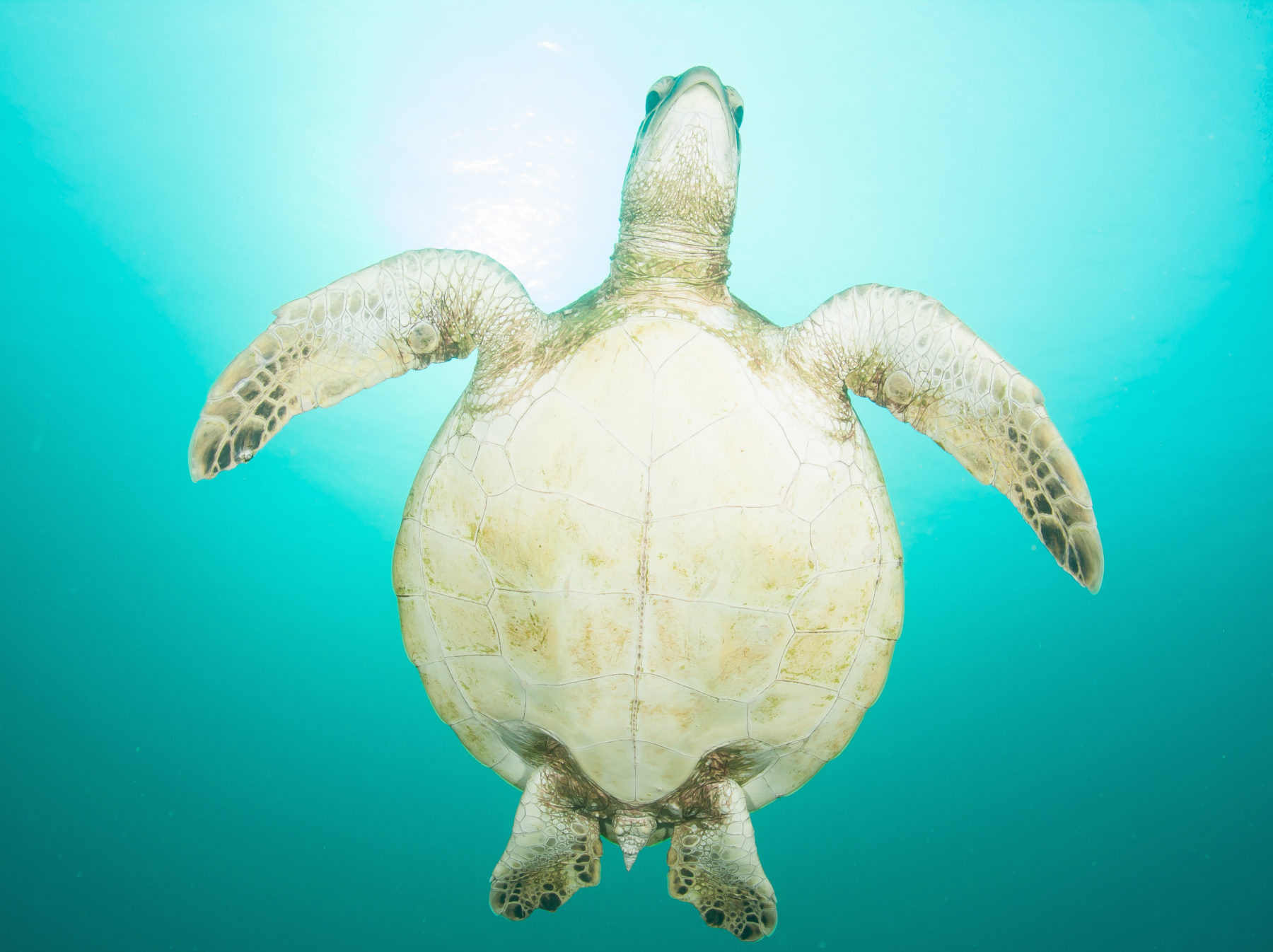
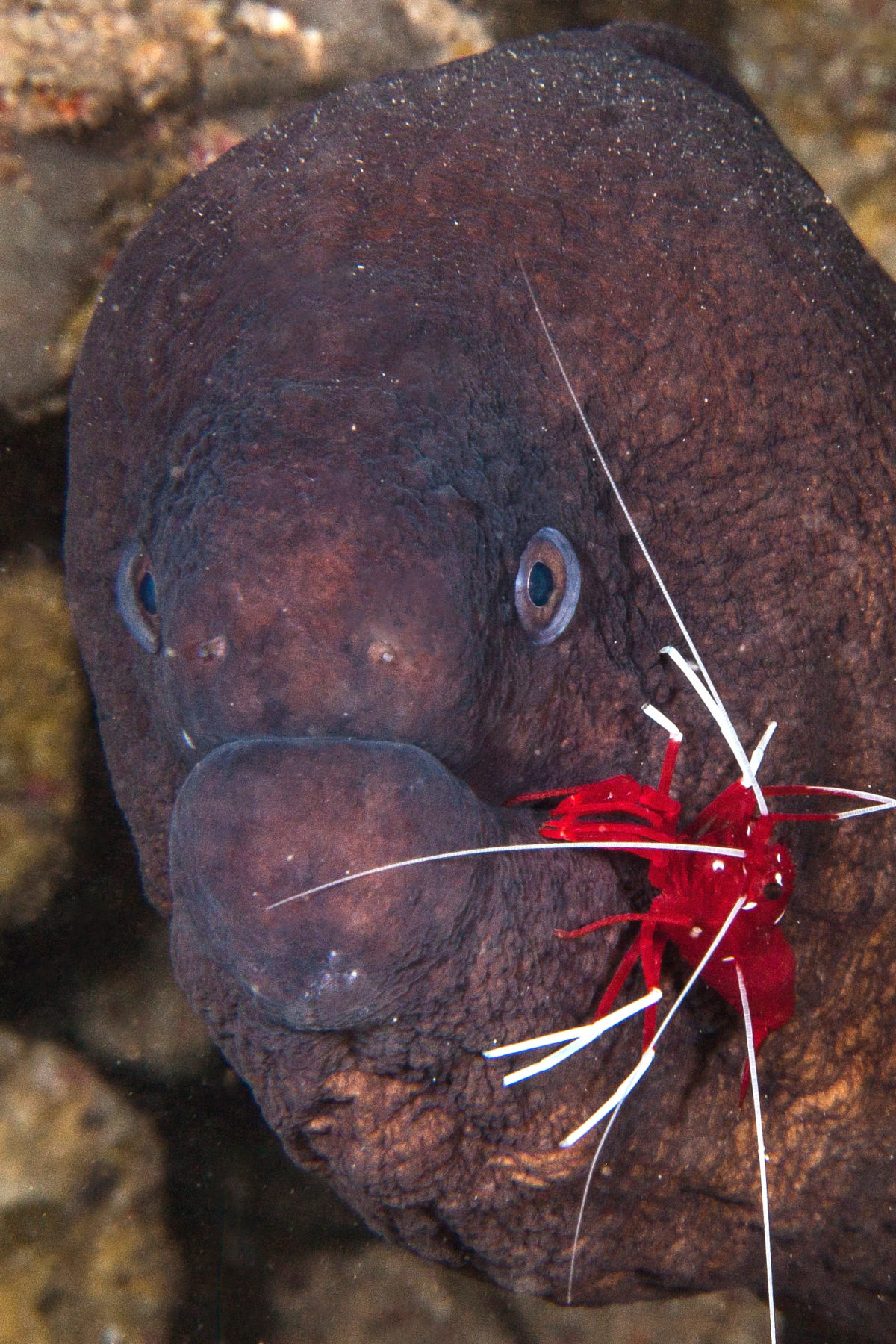
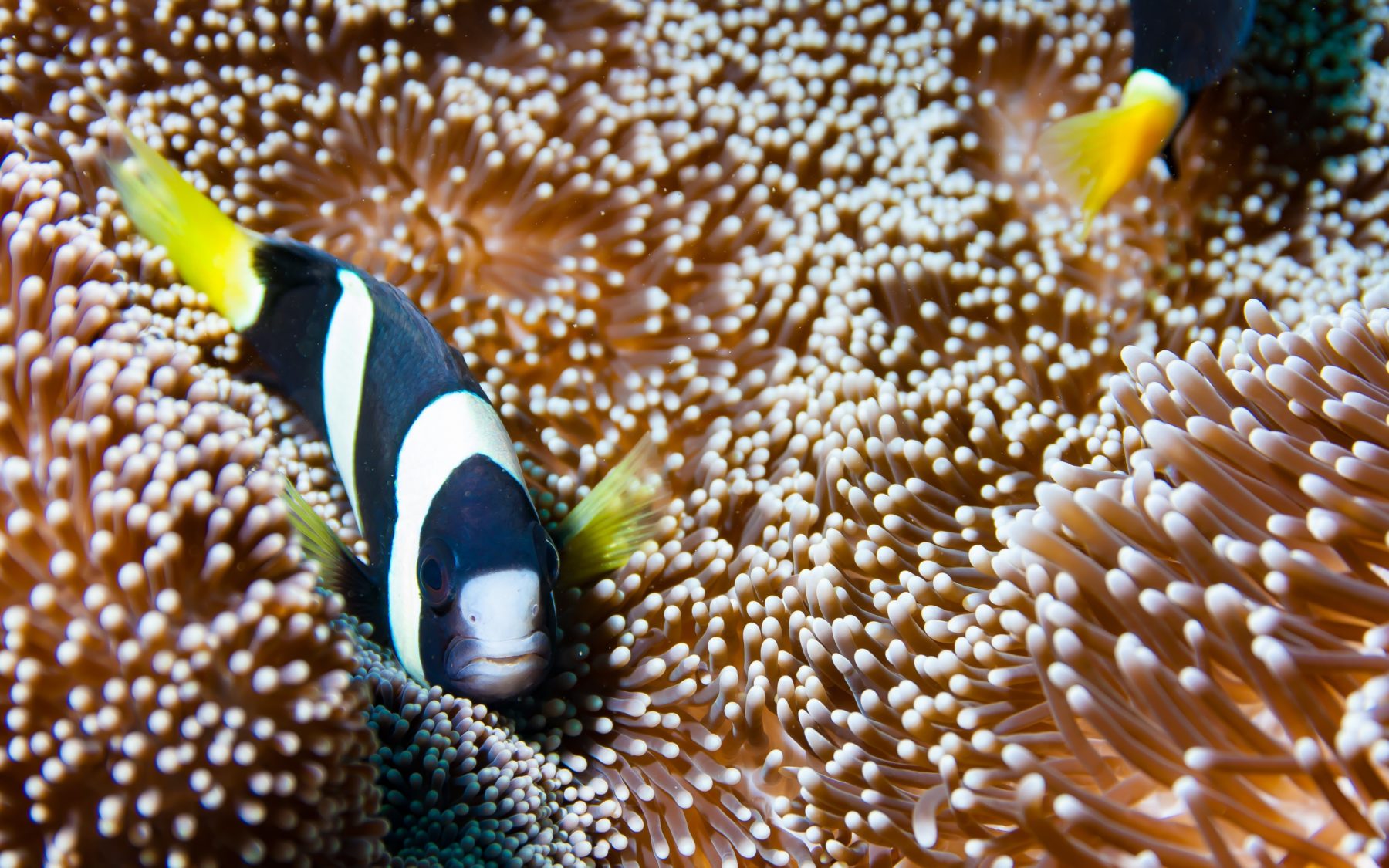
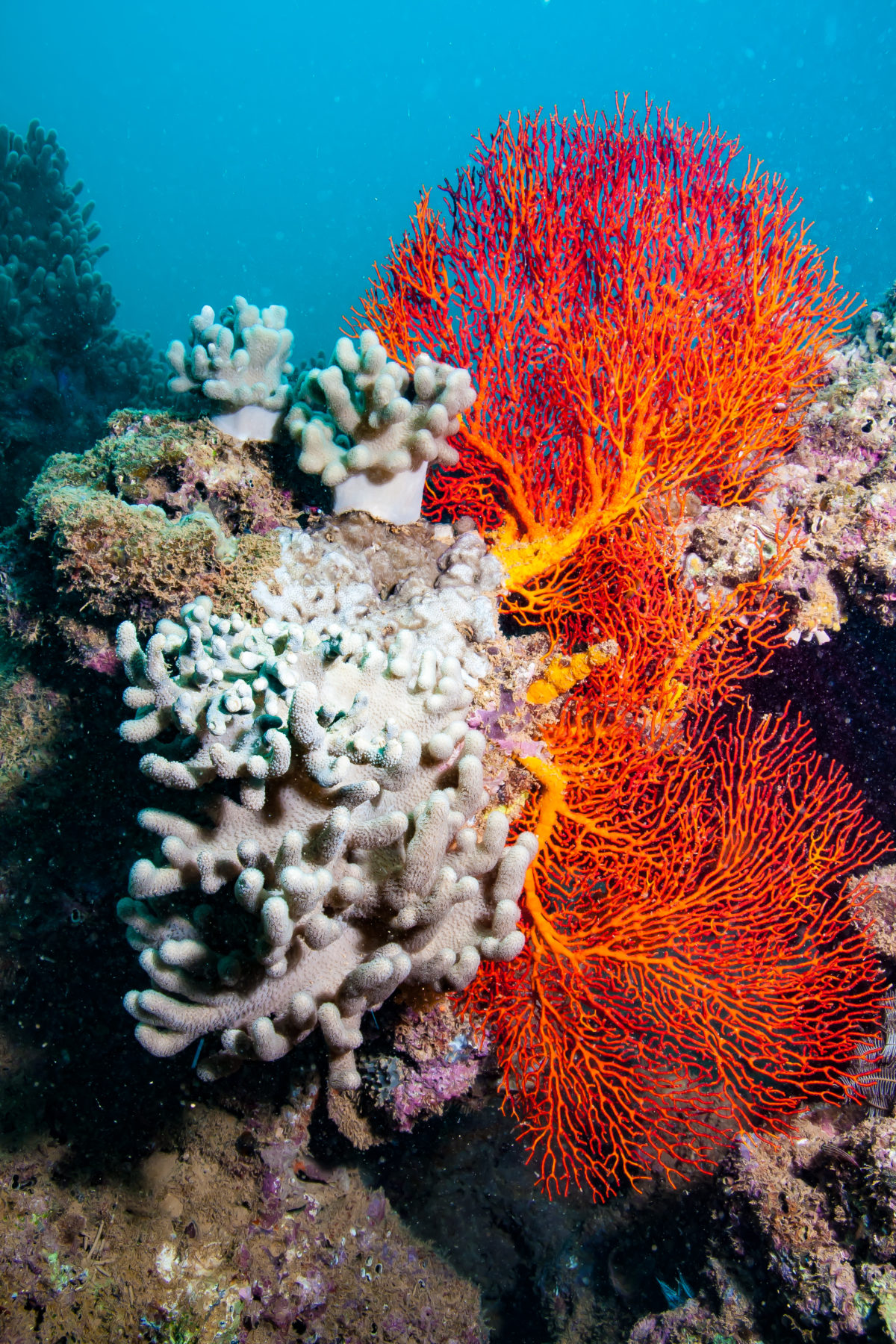
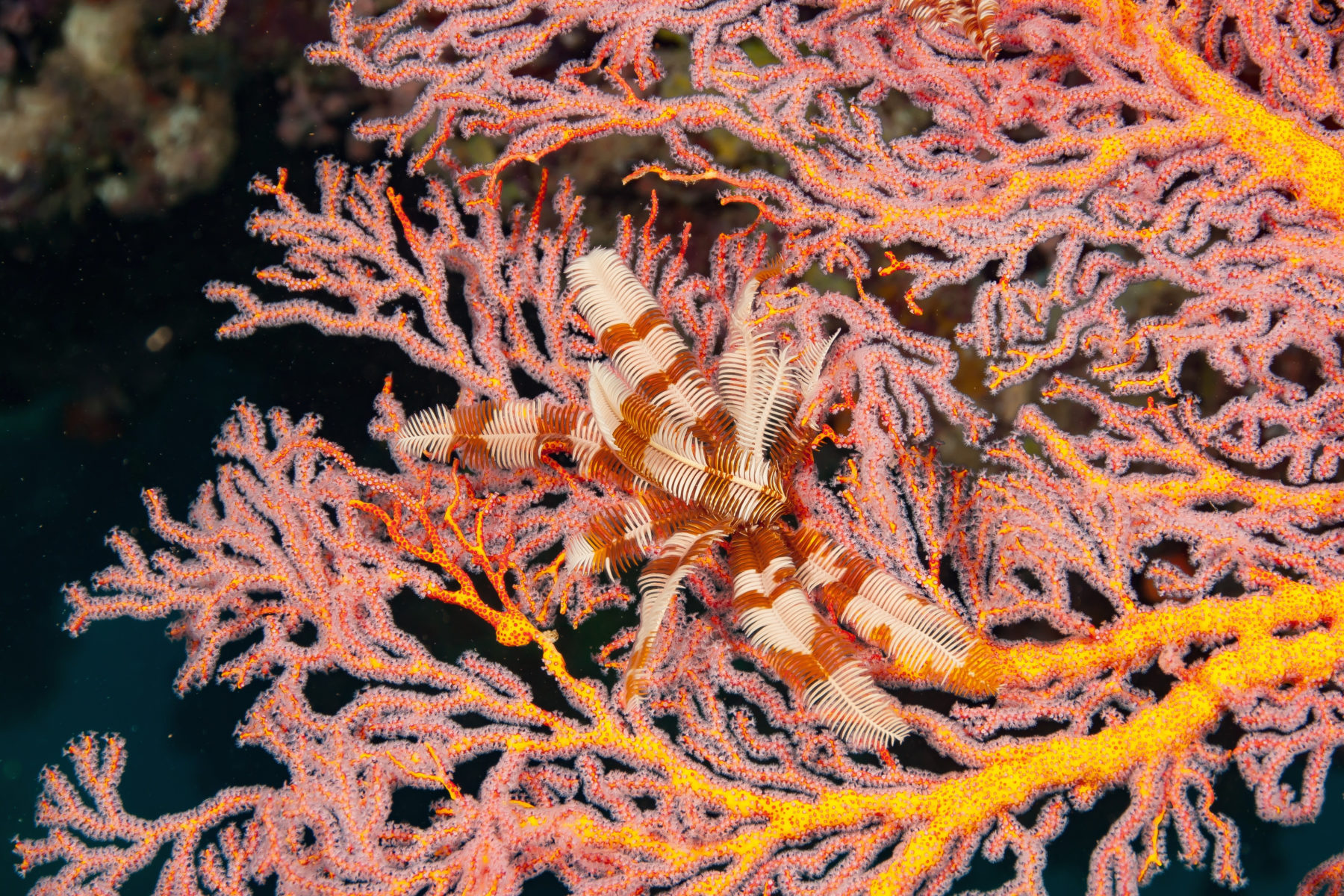
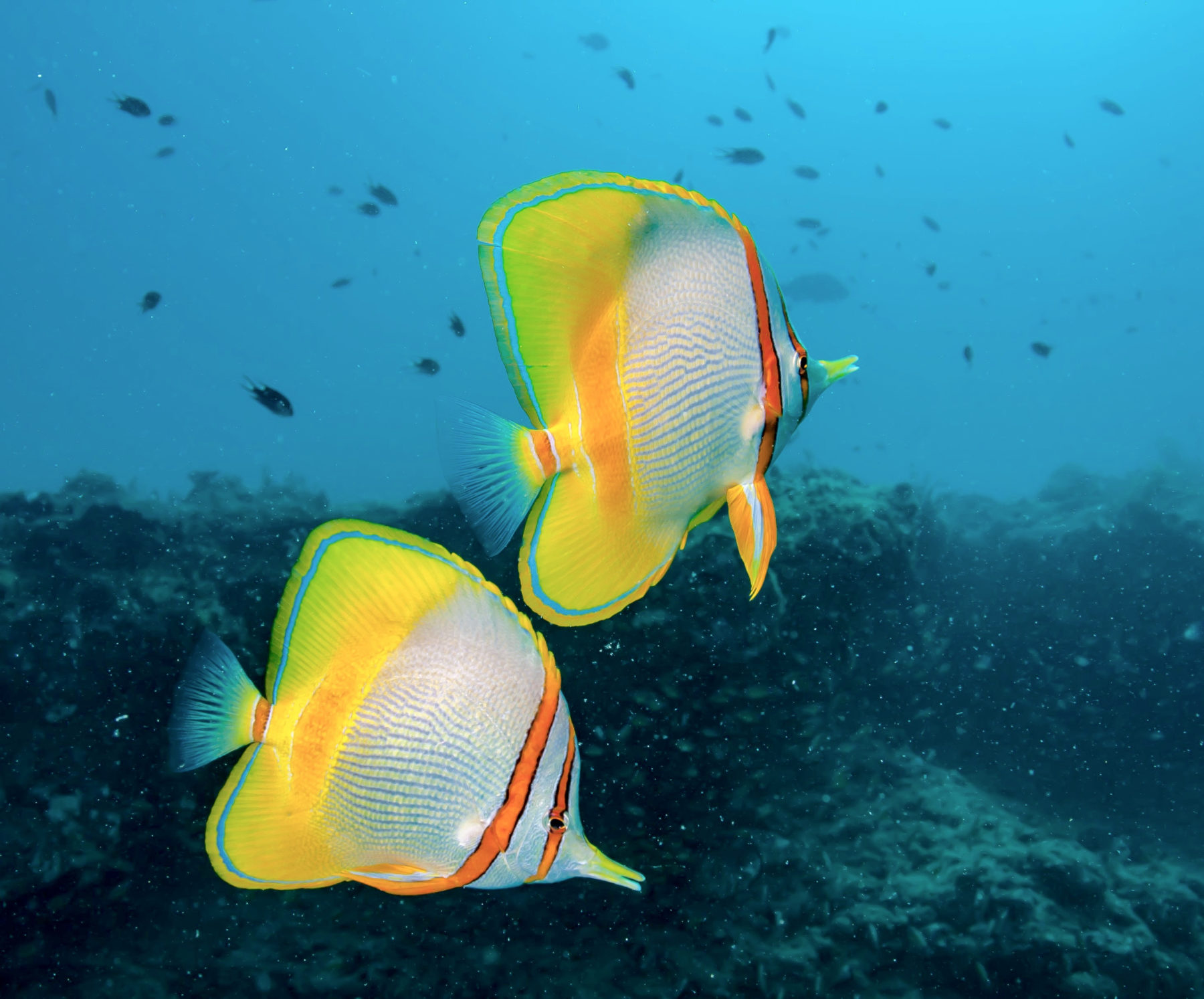
Ningaloo Reef
Deb and Mark Ferguson of Exmouth Dive & Whalesharks Ningaloo are also partners on this itinerary. The company has been operating for many years on the Ningaloo Reef and is Exmouth’s original dive centre, showcasing the denizens of the deep – the incredible whale sharks and humpback whales. Asked why Ningaloo is such an important area for whale sharks, Deb and Mark said: “The natural food chain starts with coral spawning and continues with numerous other animal spawning; the whole area including the Exmouth Gulf contributes. This food source is pushed to the surface by ocean currents and sunlight, this food attracts whale sharks from March right through to September to filter feed. It is the longest most reliable congregation (of whale sharks) in the world.”
Whale sharks’ range in size from 5–12 metres, and while most of them are male, it is one of nature’s mysteries as to why that is. Swimming with whale sharks is a once in a lifetime experience, and an unforgettable one. “Whale sharks are a huge fish, and they do not surface to breathe,” said Deb and Mark. “They are filter feeding naturally and are very sedate, allowing us to swim within three metres of them for a number of minutes at a time.
“It is different to swimming with humpback whales. The humpbacks are mammals, they tend to swim at various depths for 10–15 minutes and then surface for a number of breaths before diving again. They are a very much more spatially aware animal, in Ningaloo to reproduce and escape the winter in Antarctica. Because of their nature, we can only get to within 15m of a whale if they wish to interact, so tend to watch them swim past.”
In addition to swimming with whale sharks or humpbacks, guests on the tour might also see turtles, dugongs, sea snakes, rays, dolphins, sharks (safe ones), anemonefish, manta rays, oceanic manta rays, humpback and spinner dolphins as well as bottle nose dolphins. Then there are green, hawksbill and loggerhead turtles, leopard sharks, reef sharks and hammerhead sharks – all harmless.
Deb and Mark said: “The experience also includes a wildlife cruise in Exmouth Gulf with seagrass meadows, dugongs and whales. This is such an important ecosystem to preserve. “It is a major resting area for humpbacks on their journey along the coast and provides safe haven for mothers with calves. With a huge food chain in the Gulf, manta rays feed on tide lines, dugongs feed in the seagrass and every species of fish uses the gulf to reproduce. A huge prawn fishery has operated in the gulf for years, showing how large the food chain is and the mangrove areas are teaming with juvenile fish of countless species, right down to the remotest areas at the base of the Gulf.”
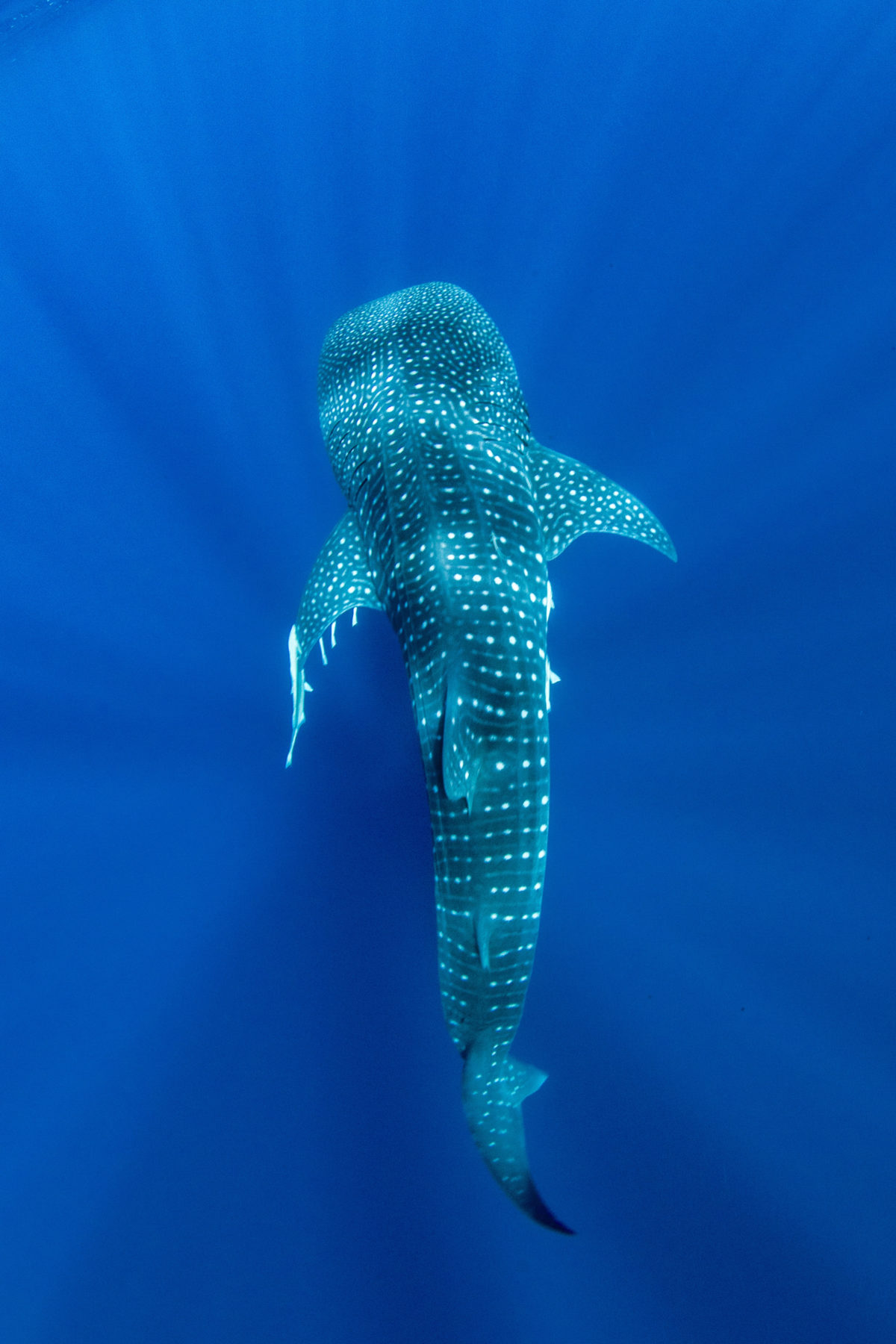
Whale shark. Image credit: Exmouth Dive & Whalesharks Ningaloo.
On tour in the wild west
On the Island birds and whale sharks (or humpback whales depending on the time of year) and Ningaloo Reef wildlife and conservation tour, there so many highlights, but the conservation element is vitally important. Guests will visit a special gorge in the park to conduct a head count of black-flanked rock wallabies and study which side of the gorge the wallabies use in different temperatures. The findings so far have been surprising.
On the tour, guests will also conduct a survey of all wildlife and birds seen on Muiron Islands, a World Heritage-listed area that has a staggering diversity of wildlife. The Muiron Islands is a relatively unknown and unexplored group of atolls in the Indian Ocean at the entrance to Exmouth Gulf and are surrounded by coral reefs rich with sea life and birds. Roger Smith said guests have spotted many ospreys, a beach stone curlew – an unexpected find – and a small blue butterfly that has still not been identified.
Deb and Mark said every day is an adventure on Ningaloo Reef. “We all love working here as there are so many surprises out on the Reef with so many different animals to see. Also, the Cape Range National Park is a fantastic area to explore with endless beaches and huge gorges to walk.”
As for Roger Smith, he said: “There is nothing else in the world that matches the Exmouth/Ningaloo region. It contains a unique system of wildlife and geology that is stunningly complex. Every time we run a trip we find something else that seems to defy what you would think of as being normal.”




